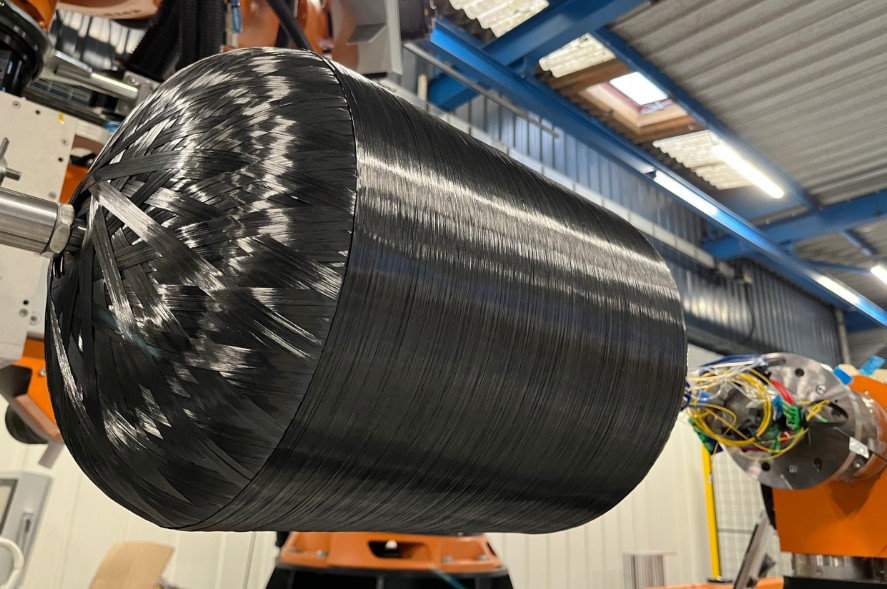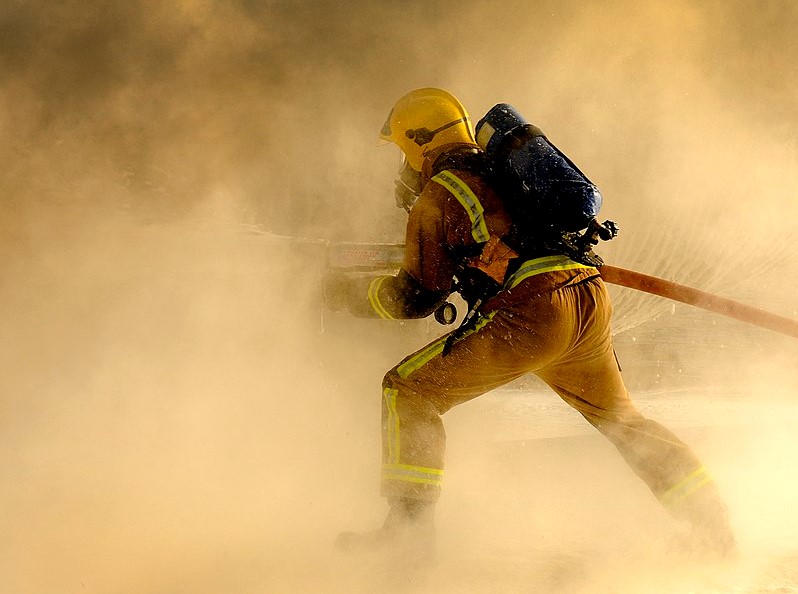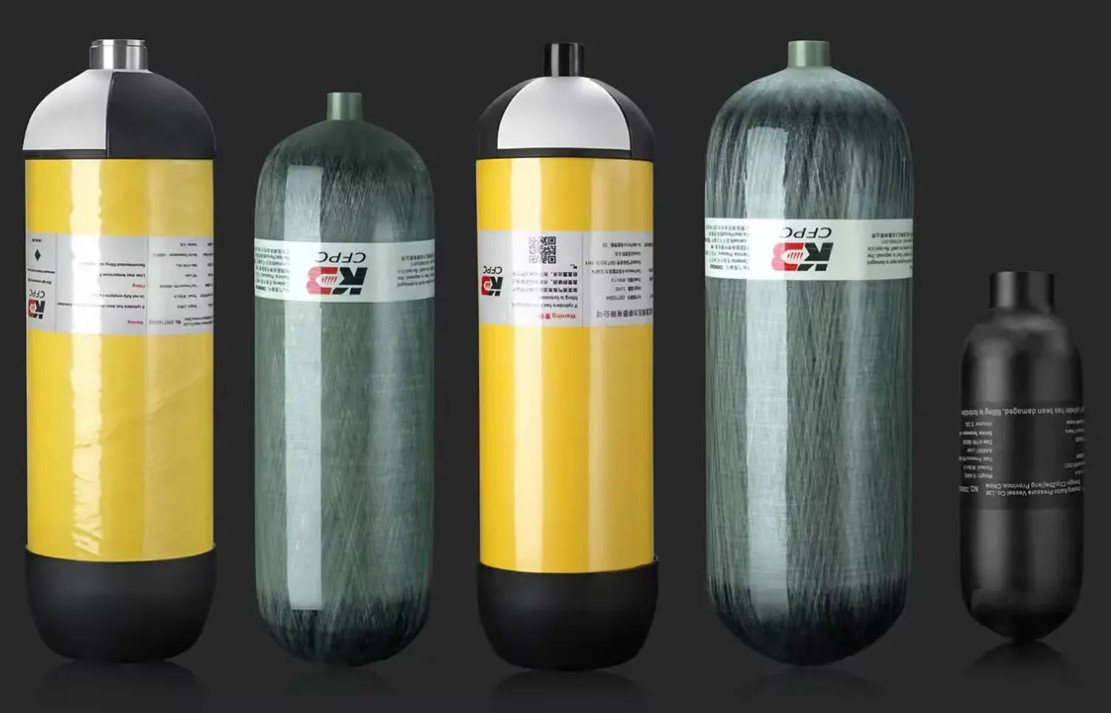When it comes to wilderness rescue operations, equipment reliability, mobility, and lightweight design are crucial. Wilderness rescue teams frequently operate in challenging terrains that require them to be swift and prepared for extended, physically demanding missions. One of the most essential pieces of equipment for such teams is an air supply system, and carbon fiber air cylinders are increasingly becoming the preferred choice due to their unique benefits. This article will delve into the advantages of carbon fiber air cylinders, particularly for rescue units in rugged environments, and how these cylinders are optimized for life-saving missions.
1. Understanding Carbon Fiber Air Cylinders
Carbon fiber air cylinders are designed using advanced composite materials—primarily carbon fiber—to create a strong but lightweight containment for compressed air. Compared to traditional steel or aluminum cylinders, carbon fiber offers a significantly higher strength-to-weight ratio. In the field of emergency and wilderness rescues, these properties are particularly valuable. Carbon fiber composite cylinders can store high-pressure air while reducing the overall weight carried by a rescuer, which is vital in remote and hard-to-reach areas.
2. Key Benefits for Wilderness Rescue Units
Rescue units operating in wilderness areas face many unpredictable challenges: rugged landscapes, extended operational durations, and often limited support or resupply options. Here’s why carbon fiber air cylinders provide a practical solution:
Lightweight for Enhanced Mobility
One of the most pressing needs for rescue units in the wilderness is to maintain high mobility. In many cases, rescuers must carry all necessary equipment on foot for miles across challenging terrain, and the weight of the equipment has a direct impact on their stamina and speed. Carbon fiber air cylinders weigh around 30-50% less than comparable steel cylinders, providing a crucial advantage in such scenarios. This weight reduction translates into improved mobility, allowing rescuers to cover more ground faster, ultimately enhancing their response time and effectiveness in life-saving situations.
Increased Air Capacity and Duration
Carbon fiber cylinders can hold a greater volume of compressed air relative to their weight, providing rescuers with extended breathing air supply. This increase in air capacity is particularly important in wilderness rescues where resupply or backup may be hours away. Whether dealing with high-altitude rescues where supplemental oxygen is needed or navigating confined areas with limited ventilation, these high-capacity air cylinders are vital. The extended duration allows teams to perform longer rescues without sacrificing safety or efficiency.
Durability and Resistance to Environmental Stressors
Wilderness environments are unpredictable and can subject equipment to physical wear, temperature fluctuations, and moisture exposure. Carbon fiber air cylinders are highly durable and resistant to impacts, a necessary feature when rescues involve rocky terrains, forested areas, or water crossings. The composite material is resistant to corrosion, which is essential for use in humid or wet conditions, where metallic cylinders might suffer damage over time. Additionally, carbon fiber cylinders are designed to withstand significant temperature variations, making them suitable for both hot and cold climates.
3. Enhanced Safety Features
Safety is paramount in rescue operations, and carbon fiber cylinders provide several inherent advantages:
- High Burst Pressure: Carbon fiber cylinders are designed with high burst pressure, often well above their standard operating pressure. This design gives rescuers a buffer of safety, which is essential in demanding situations where the risk of accidental over-pressurization might arise.
- Lower Fatigue Risk: The lightweight nature of carbon fiber cylinders also minimizes the physical strain on rescuers, which can reduce the risk of fatigue-related injuries. Fatigue can impair judgment and lead to mistakes; therefore, lighter gear directly contributes to team safety and overall effectiveness.
- Compliance with Rigorous Safety Standards: Carbon fiber cylinders meet or exceed many global safety standards, ensuring reliability. This reliability is essential in wilderness operations, where any equipment failure could be life-threatening.
4. Improved Maneuverability in Difficult Terrain
The flexible yet sturdy construction of carbon fiber cylinders allows for better handling and maneuverability in rough or uneven terrain. Whether a rescuer is climbing rocky slopes, traversing dense forests, or wading through water, the lighter carbon fiber tank adds minimal bulk. Additionally, carbon fiber cylinders are designed to fit comfortably in backpacks or harnesses, making it easier for rescuers to navigate challenging landscapes without being hindered by cumbersome equipment.
5. Cost-Effectiveness in the Long Run
While carbon fiber cylinders generally have a higher initial cost compared to traditional steel cylinders, they often prove to be more cost-effective over time. Their resistance to corrosion and durability against wear means they require less maintenance and have a longer service life. In the long term, rescue units may save on replacement costs and maintenance expenses, especially when frequently operating in conditions that would degrade conventional cylinders.
6. Potential for Multipurpose Use in Wilderness Rescues
Carbon fiber air cylinders can also be applied in a range of critical situations beyond personal breathing equipment. For instance:
- Airbag Deployment in Search and Rescue: In scenarios where moving large debris or lifting heavy objects is required, carbon fiber cylinders can be connected to airbags for lifting purposes. This can be particularly useful in landslide zones or collapsed structures.
- Water Buoyancy Support: For water-based rescues, carbon fiber tanks can be adapted to provide buoyancy assistance, either by helping to keep equipment afloat or supporting rescuers in swift-water rescues.
7. Sustainability and Environmental Benefits
Carbon fiber composite cylinders offer a more sustainable option for wilderness rescue operations. The materials used in carbon fiber construction are often recyclable, and the extended lifespan reduces waste compared to steel cylinders that may corrode or wear out faster in challenging environments. Given the increasing focus on environmental responsibility, especially in protected or sensitive wilderness areas, this is an added advantage for rescue organizations aiming to minimize their ecological footprint.
Conclusion
Carbon fiber air cylinders represent a powerful tool for wilderness rescue teams, providing enhanced mobility, durability, and safety features essential for effective rescue operations in difficult environments. With their lightweight design, extended air capacity, and ability to withstand harsh conditions, these cylinders are not only practical but also essential for the challenges of modern wilderness rescues. While the initial investment may be higher, the long-term benefits in terms of safety, efficiency, and durability make carbon fiber air cylinders a wise choice for wilderness rescue units worldwide. As rescue operations continue to demand improved performance, carbon fiber cylinders will likely become a staple in the toolkit of teams dedicated to saving lives in the wild.
Post time: Nov-06-2024



